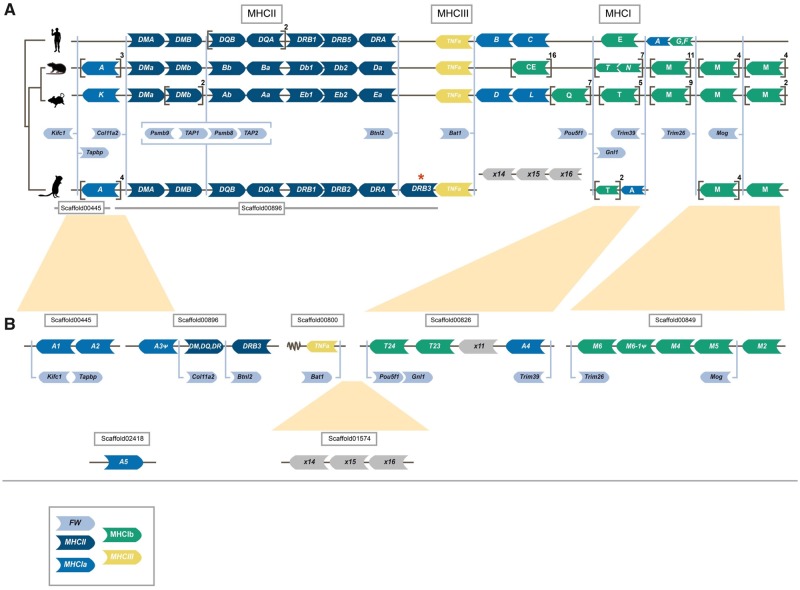Fig. 1.
—Synteny of genes in the major histocompatibility (MHC) region of human, rat, mouse, and gerbil. Genomic synteny of genes in the MHC regions of human, mouse, rat, and great gerbil mapped onto a cladogram. Genes are represented by arrow-shaped boxes indicating the genomic orientation. The boxes are colored by class region and for class I by classical (Ia) or nonclassical (Ib) subdivision: framework (FW) genes (light blue), MHCII (dark blue), MHCIa (blue), MHCIII (yellow), and MHCIb (green). Square brackets indicate multiple gene copies not displayed for practical and visualization purposes, but copy number is indicated outside in superscript. Due to limitations in space and to emphasize the conserved synteny of FW genes across lineages, the genes are placed in between the general syntenies and their respective locations are indicated by light blue lines. The light blue brackets surrounding the Psmb and TAP genes indicate their constitutive organization. Putative pseudogenes are denoted with ψ. For visualization purposes, genes of the DP (termed H in rat) and DO (termed O in mouse) loci are excluded. The location of all great gerbil MHCII genes including Rhop-DP and Rhop-DO can be found in table 3. (A) Synteny of all MHC regions detailing MCHI and II. Panel (B) further details the genomic locations of great gerbil MHCI genes as indicated by the presence of FW genes located on the scaffolds and inferred from synteny comparisons with human, rat, and mouse regions and phylogenetic analysis (see fig. 3A). The overall synteny of the MHCI and II regions is very well conserved in great gerbil displaying the same translocation of MHCI genes upstream of MHCII as seen in mouse and rat and resulting in the separation of the MHCI region into two. Most notably, for MHCII, there is a duplication of a β gene of the DR locus in great gerbil (highlighted by a red asterisk) whose orientation has changed and is located downstream of the FW gene Btnl2 that normally represents the end of the MHCII region.

